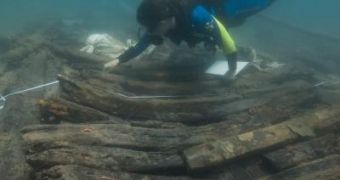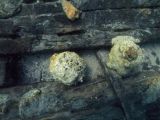While observing the thick wooden hull of old warships, experts at the University of Haifa and the Rafael Advanced Defense Systems Ltd. became curious as to how exactly a cannonball fired from a regular cannon could have penetrated the ship's defenses. They started asking these questions after examining the hull of a 19th century warship that was sunk near Acre, a city in the Western Galilee region of northern Israel. To get some answers, they set up a battle scenario and proceeded to record the parameters of the simulation precisely.
Discovered in 1966, the warship began revealing its secrets only three years ago, after experts at the University of Haifa took an interest in the wreck. Old documents, including a 1799 British map, seem to indicate that this was a blockship that was sunk by the English navy, so as to bar any French ships from entering the harbor, during Napoleon's attack. What puzzled experts was the fact that the hull, which was made entirely out of oak wood, was unusually thick even for a warship.
Dr. Yaacov Kahanov, the leader of the research team from UH Leon Recanati Institute for Maritime Studies, became curious about whether cannonballs fired by the British would have sufficed to sink this heavily armored behemoth. Since constructing cannon replicas and firing them at wood is very expensive and complex and produces little scientific benefits, he decided to construct an accurate scale replica of the ship, which was both smaller and easier to control scientifically.
Rafael engineers developed the unique ship model based entirely on the schematics of the sunken warship. Five 1:2 scale replicas were constructed for the experiments, which were carefully controlled, measured and documented. The same engineers then adapted an experimental ball to fire steel balls, to such accuracy that even the muzzle velocity of the epoch – 100 to 500 meters per second – was faithfully recreated.
When the “cannon” was fired, it was revealed that it had the ability to splinter the wood of the boats at even the lowest muzzle velocity. In fact, the devastation it caused was more severe at low speeds, because more energy went into destroying the wood, splintering it. This would have maximized casualties with the crew. At high velocities, the cannonballs penetrated more inside the ship. The new experiments bring more insights into how the fate of some of the greatest ship battles in history was decided.

 14 DAY TRIAL //
14 DAY TRIAL // 
